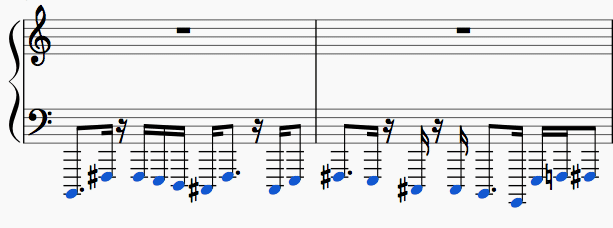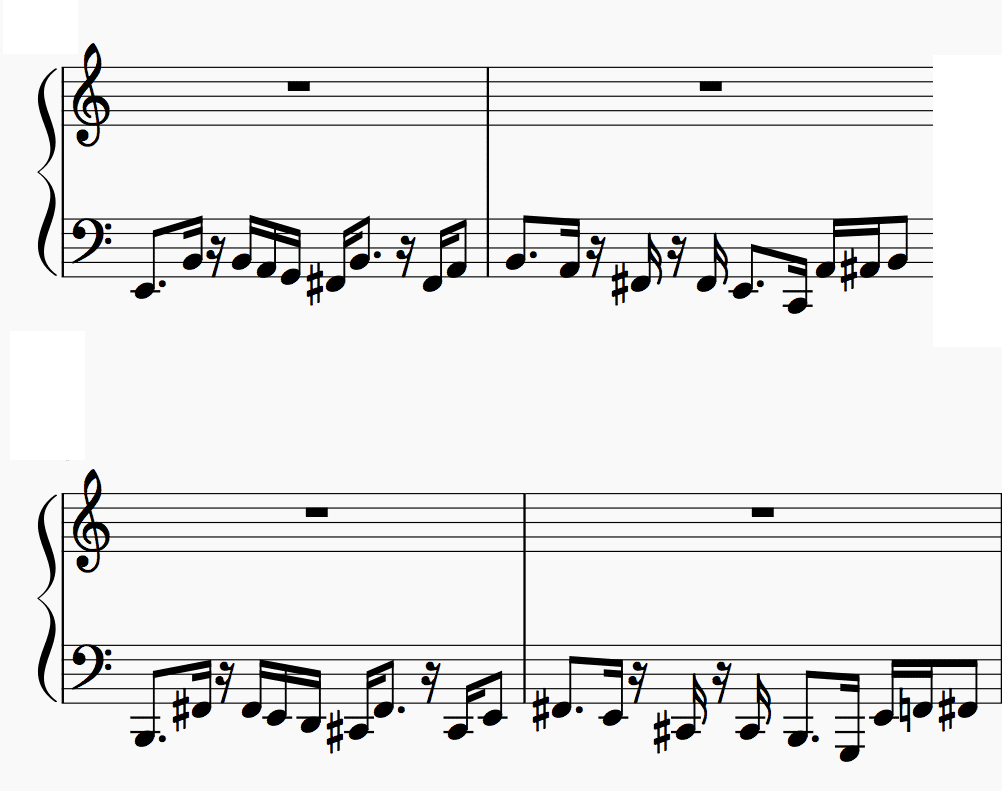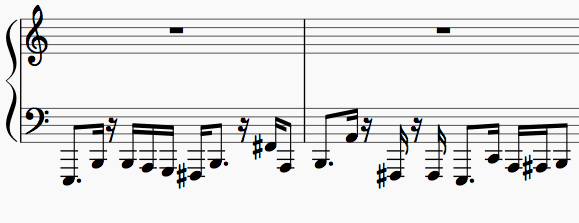What is a Transposing Instrument?
Transposing means porting a piece of music into a different key or range. Some instruments are “transposing instruments” which means that the note written on the score is, in fact, not the pitch that is sounding.
There are two main reasons why there are “transposing instruments”
1 • Ease of Operation!
Do you remember the recorder from elementary school? When the notes said “middle C” you put all your fingers down and a C sounded. Now let’s say you practiced really well and graduated to alto flute. The alto flute is a bit longer and larger and when you place all your fingers over the wholes, an F below middle C sounds. So now you had to tear out your hair and relearn all the fingerings.
In contrast, if you learned the flute, which has quite a few keys and a more complex fingering system, you learned that all fingers down meant “C”. Then you switched to alto flute, where all fingers down is a G below the staff. In this case, however, people decided it would be more economical to just transpose the score, so the flutist does not need to relearn all the complex fingering on the flute, whew. So, they would write a C when they wanted a low G and they would write an F if they wanted a C to sound. All we need to do is change the score and the fingerings for the flutist remain the same. The alto flute, then, is a transposing instrument that is written a fourth higher than it sounds. Great!
2 • Range!
Ledger lines! Okay, so how do you feel about reading this, for example (a four-string bass actually has those pitches):
or how about this (a five-string bass has these sounds):

The above are bass lines written on a piano staff (non-transposing). Na, thanks! Too many ledger lines. So, the convention is to notate the bass an octave higher with the understanding that what we hear is an octave lower.
The examples from above look like this when the bass clef is meant for the bass player (it is still a piano staff):

So much easier to read!
Of course, there are also quick notation shortcuts that can help us, whenever we need octave transposition – such as this “8va” (“octava”) sign, which says: play an octave higher than written.

The opposite – “8vb” or “octava basso” – also occurs and it looks like this (find it underneath the staff):

We don’t use these shortcuts often for bass, though, because they are cumbersome and would be over the entire staff anyways. Or most of it. And then we have to flip octaves.
Basically, whenever bassists read music our score always has such an “8vb” sign implied over the entire score because we take it down one octave, play it in effect an octave lower than written. Sometimes you can see a tiny number 8 below (or above) a clef, which is also pointing to the same octave displacement:

What This Means:
It means that the Bass is a transposing instrument that transposes an octave down. Said differently: the (electric) bass is written an octave higher than it sounds.
- Know the range of your bass. If you look over a pianist’s shoulder and see them read the low E, they will sound an octave higher than you do.
- When you play piano or cello pieces on your bass, take the notes up an octave to match the range!
- Here is your low end:

-
Some instruments transpose by as little as just a whole step (Bb trumpet, Bb clarinet); or by as much as an octave plus a whole step(tenor sax for example).
-
Others by a major sixth or minor third plus octaves up or down (alto sax, bari sax).
-
Other instruments use specific clefs that help their range stay readable and without too many ledger lines, such as the alto (viola) or tenor clefs (cello at times, bassoon).
-
And yet others by just an octave, such as us bass players and on the other end of the spectrum, the piccolo flute.
Range is the Rage
It is so cool that our hearing affords us such a wide frequency spectrum. That way we can spread out lower and higher frequencies and everything in between without getting too much low end rumble (unless that is the effect we are looking for) or without getting lost in ethereal ethers of thin sounding high notes (unless, again, that is the effect we are going for, it’s beautiful if used well). And then we can combine everything in between for beautiful variations and effects.
There are a lot of notes – the piano for example reaches from “A0” all the way up to “C8” (that’s counting the lowest A as the “zero range”, with numbers switching each time at the note C;) “middle C” – the one between bass and treble clefs and the first note we learn on the piano – is then “C4”. There are different systems of counting octaves, but this is one that is used a lot in the USA and is also the International Scientific Pitch standard. (So please, everybody in the Yamaha camp, come on board and accept middle C as C4 already!)
What gets me is as a low ender is that the piano has two notes on us, even when we bring the five string. So jealous! I have friends who remedy that situation and manage to win the “race to the bottom” (so to speak) by exploring additional low strings on extended range basses or tunings as low as the C# below the B (that is C#0)! Check out sub-contra bassist Jauquo-iii X’s “C# Theory” for example.
Can you find “Middle C” on your bass?
Hint: Take what you read as middle C and place it up the octave. All basses (including 20-fretters) have that note. A six string even has another C on top of that.
For more info on the range of the bass check out Chapter 2 in my book, Music Theory for the Bass Player. That page 11 is quite the infamous page with my crew – we had to finagle and wrangle it quite a bit to make it all fit. Enjoy!
To learn more Music Theory for the Bass Player, check out our 20 unit course!






